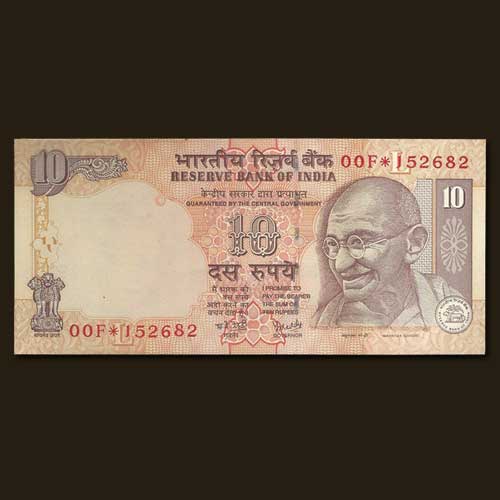Inset Letters on Banknotes
2021-05-13 Thu
The volume of banknotes printed in India is huge which necessitated the use of insets which in the case of Indian Banknotes is Alphabets. The Inset was an alphabet in uppercase in bold beside the serial number initially and later positioned beneath the serial number from 1976 onwards.There are four different currency press that prints notes for the Reserve Bank of India. Each of the four currency printers is allotted a separate set of inset letters for their internal identification purposes. The Inset first appeared in 1945 on a One Rupee Banknote of Government of India with the portrait of King George VI.
The purpose for the use of an inset is two-fold:
1. The use of an inset is to differentiate distinct series of banknotes. There are a large number of banknotes that are printed in India. Once a series is complete, instead of commencing a completely new series, an inset is included beneath the serial number to the same series. This creates a separate identity for the banknote.
2. To identify the printer. From 1996, the inset alphabets are specific to the four different banknote printers currently used to print Indian banknotes by the Reserve Bank of India. Each of these four different banknote printers has been allocated specific inset alphabets.
The inset numbers have utter importance just as the signature and security thread or a watermark.
Image Courtesy: blogspot.com
Latest News
-
Gold Pagoda of Vijaynagar Empire King Deva Raya I
2024-04-10 WedKing Deva Raya I of the Vijayanagara Empire was a patron of Kannada literature and architecture. He ...
-
Silver Denarius of Septimus Severus
2024-04-05 FriLucius Septimius Severus served as the Roman emperor from 193 to 211 AD. Severus sat on the throne o...
-
Extremely rare 'Malaharamari' type Gold Gadyana of King Guhalladeva-III Sold for INR 611000
2024-04-03 WedTribhuvanamalla, also known as Guhalladeva III, was the ruler of the Kadamba dynasty. His reign coin...
-
90 Years of RBI
2024-04-02 TueOn 1st April, PM #Modi unveiled a special commemorative coin marking 90 Years since the foundation o...
-
Silver Denarius of Julia Mamaea
2024-04-02 TueJulia Avita Mamaea, a Christian Syrian noblewoman, was the mother of Roman Emperor Alexander Severus...

